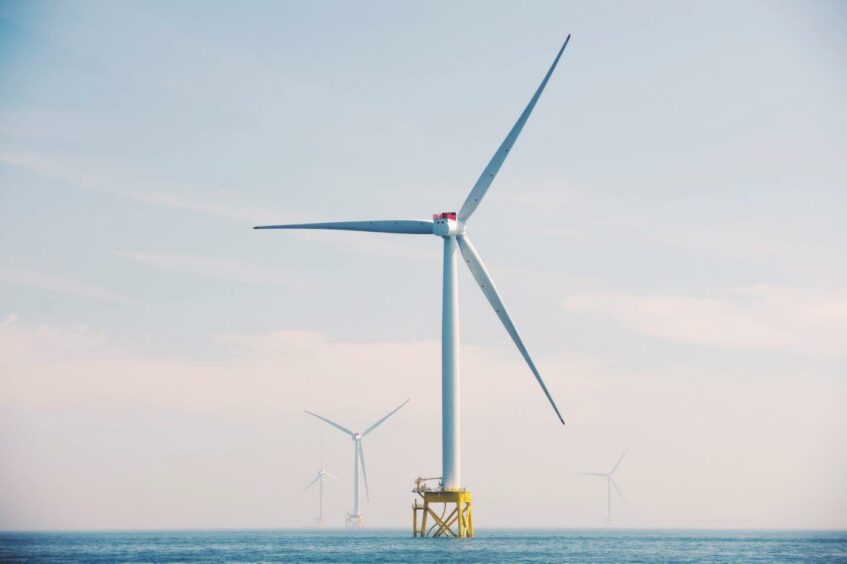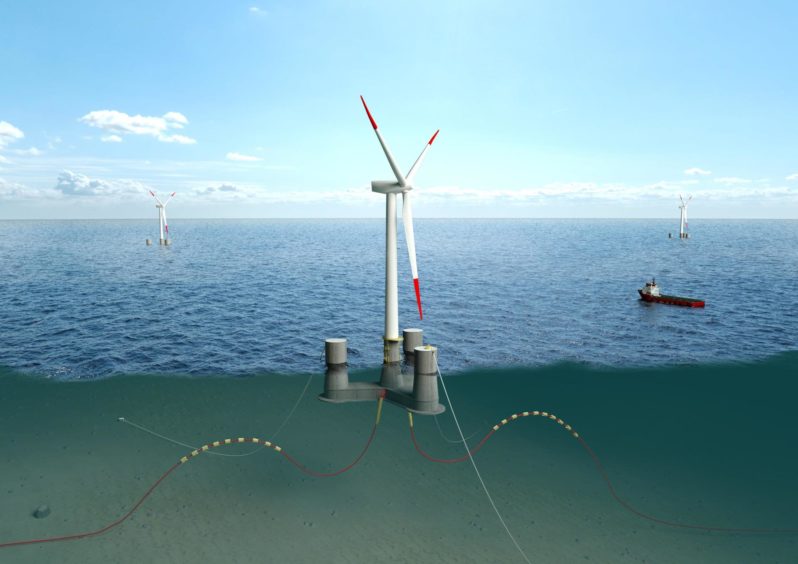
Reports have surfaced that Shell is looking to sell off its ScotWind leases after spending more than any other firm in the offshore wind leasing round.
Shell, alongside partners Scottish Power, spent £154,400,000 across two North Sea wind farm sites in Crown Estate Scotland’s seabed leasing process in 2022.
Across the two sites, the Shell joint ventures are set to produce five gigawatts (GW) of renewable energy from Scottish waters.
Shell declined to comment on a report by Bloomberg that the supermajor was looking to sell its stakes in the ScotWind licences when approached by Energy Voice.
The firm’s project partner, Iberdrola SA’s Scottish Power, also said it would not comment on market speculation.
Sawan’s ‘ruthless’ approach to competing with US counterparts
Shell has been scaling back its green commitments since current CEO Wael Sawan took over from Ben van Beurden at the beginning of 2023.
Sawan said his firm would be “ruthless” as it strived for increased profitability and share prices as it looked to compete with its US supermajor counterparts.
The London-listed firm now has a stronger focus on gaining access to low-carbon electricity for its own use and for trading rather than making investments to build large-scale renewable power that can take years to generate returns.
As a result of this, Shell made hundreds of job cuts as it looked to trim down various areas of the business, including in offshore wind and its low-carbon solutions unit.
‘ScotWind Leasing tenants have the right to alter ownership structures’
Crown Estate Scotland (CES), which manages the sale and administration of options for offshore wind sites, declined to confirm if it had been approached by Shell or Scottish Power but confirmed buyers had the right to sell.
“ScotWind Leasing tenants have the right to alter ownership structures, although they generally require our consent,” the body told Energy Voice.
“Such changes are a normal feature of offshore wind development and are treated on their individual merits when being assessed by Crown Estate Scotland.
“We continue to work closely with all ScotWind partners and are providing all appropriate support to help ensure the success of this leasing round, which is central to Scotland’s efforts to tackle the climate emergency, secure the UK’s energy supply, and which could generate billions of pounds of investment in Scotland.”
The rumours of the Shell sale surfaced after other another ScotWind developer appeared to be getting cold feet.
BlueFloat for sale as Government argues in favour of wind investment
Recently it emerged BlueFloat owner Quantum Capital Group hired the Royal Bank of Canada to review options for the sale of the ScotWind developer.
Houston-based Quantum, which owns BlueFloat through its green investment arm 547 Energy, 5 is reportedly looking to sell the offshore wind developer for close to €500 million (£421m).
A Scottish Government spokesperson said in a statement it would be “inappropriate to comment on private commercial arrangements.”
But it argued that despite one of the firms that made the biggest commitment to ScotWind potentially stepping down, there is still an appetite for green investment in the country’s waters.
The government spokesperson explained: “A strong pipeline of port infrastructure and supply chain projects to support the offshore wind sector has emerged through the Strategic Investment Model (SIM) process with a combined total Capital Expenditure of around £6.5 billion.
“Recent significant investments include Sumitomo Electric’s £350 million inward investment to deliver a new high voltage direct current (HVDC) cable manufacturing facility in Nigg and the £100m joint SNIB and UKIB investment into Ardersier Port.”
A total of 17 projects, with combined capacity of 25 GW were selected out of a total of 74 ScotWind applications by CES in 2022.
Shell and its partner spent £86 million on a floating offshore wind lease option set to generate 2GW.
Additionally, the duo spent £68.4 million on another lease for a 3GW floating project.

 © Supplied by Shell
© Supplied by Shell © Supplied by Falck Renewables
© Supplied by Falck Renewables